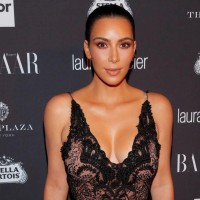The famous, glitzy pill-popping novel is not feminist in modern terms. But as a document of a weird watershed in American culture, its unparalleled

Ive got to leave something on this earth before I go, and I dont want it discovered after I go, Jacqueline Susann wrote in her diary on New Years Day, 1963. She would fulfill that ambition three years later with the publication of her second novel, Valley of the Dolls. By the time Susann died of breast cancer in 1974, it had sold 17m copies, spawned a hit movie and made her the favorite punching bag of a literary world that surely envied her success.
On its 50th anniversary, with sales now soaring above 30m, Valley of the Dolls is still luring in readers. Less predictably, its attained a cultural cachet that would have delighted its author. Grove Press (along with Virago in the UK) has just reissued the novel with a stylish 60s-retro cover, Criterion Collection will release a deluxe edition of the film in September and everyone is talking about how contemporary Susanns show business roman clef feels in 2016.
Every year it reasserts its relevance, the authors 33-year-old step-grandson Whitney Robinson told the New York Times this winter. In his introduction to the new edition, the writer and Barneys creative ambassador Simon Doonan judges it the perfect mirror for todays culture.
These marketing lines are, at best, exaggerations. Some parts of the book have aged well, its true. The plot follows three archetypal showbiz girls: beautiful, well-bred Anne Welles; brassy, talented Neely OHara; and sexy, pragmatic Jennifer North. The trio seeks fame and get hooked on prescription pills in the two decades following the second world war in a way that made the novel particularly progressive about sex. Susann examines the female orgasm, menstruation and even lesbianism with the frankness we now associate with womens blogs. Although Jennifer had been startled at the proposal, Susann writes of a youthful affair between female classmates, she felt no revulsion; in fact, she was even a little curious.
Valley of the Dolls was also an excellent document of a short, crucial period in American history: the mid-1960s. The novels ambitious, libidinous heroines owe almost as much to Betty Friedans The Feminine Mystique as to Helen Gurley Browns Sex and the Single Girl; both became bestsellers early in the decade. Meanwhile, Timothy Leary was researching psilocybin and LSD as a psychedelic counterculture began to coalesce on the west coast. But neither second-wave feminism nor the hippie movement had reached critical mass by 1966, and its not as though the author or her readers came from either world anyway. Susann used Middle Americas growing fascination with celebrity to reel in readers.
Legend has it that before her death, Susann announced to a critic that the 60s would be remembered for the Beatles, Andy Warhol and herself, in an immortal soundbite thats quoted on the back cover of the new American edition. Though shes often ridiculed for the statement, shes as much a transitional figure as those men were, bridging the commercial pop sensibility of the decades first half with the sexual and political revolutions of its final years. The Valley of the Dolls movie did something similar. Released just months after 1967s Summer of Love, its most explicit sex scene is framed as an excerpt from a sleazy French directors film. This sleight of hand allows viewers to judge Sharon Tates Jennifer for starring in nudies while enjoying the pretty actresss own nakedness.
Informed as it may have been by a nascent feminist consciousness, Valley of the Dollss take on gender is actually what dates the book. Susanns female characters harbor dreams and appetites that transcend the domestic sphere, but ultimately theyre grown-up children. They treat other women as rivals and rely on men for emotional stability. Even sensible Anne spends 15 years with her life on pause, sleepwalking through a TV career as she pines for her beloved Lyon Burke. Meanwhile, wise father figures like the womens attorney Henry Bellamy are always lurking in the background to save them from their own foolishness. Crooked studio heads and controlling lovers provide occasional reminders that there are corrupt men in this world too, but those moments arent nearly as vivid as the catfights or the breakdowns.
Susanns vision of ideal manhood is similarly narrow. Men like Neelys first husband Mel Harris are portrayed as emasculated for relying on female breadwinners. When Lyon cheats on Anne, Henry explains that its her fault for buying him a business and refusing to settle down with him in rural New England: He probably feels that you castrated him and not once, but twice.
By the end of the novel (spoiler warning), two of the central characters are miserable and the other is dead. But Valley of the Dolls isnt exactly Kate Chopins The Awakening; this tragedy isnt an indictment of rigid gender roles. In fact, it was intended as a cautionary tale about womens ambition. Valley of the Dolls showed that a woman in a ranch house with three kids had a better life than what happened up there at the top, Susann once said, a strange statement from a woman who spent her life chasing wealth and fame.
None of this jeopardizes Valley of the Dollss real legacy, as irresistible camp. Its melodramatic storyline and hammy characters, who overflow with emotion but never demand our empathy, have always been essential to its allure. Audiences laughed openly at preview screenings of the film. In 1969, Nora Ephron proclaimed: Good kitschy writers are born, not made. And when Jacqueline Susann sits down at her typewriter on Central Park South, what spills out is first-rate kitsch. A year later, Russ Meyer and Roger Eberts softcore sort-of parody Beyond the Valley of the Dolls appeared. Centered around an all-girl rock trio dubbed the Carrie Nations, the film features all the hippie psychedelia Susanns story lacks and, according to Ebert, grossed $40m on a $900,000 budget. It, too, will get the Criterion treatment this fall.
If Valley of the Dolls is more relevant than ever, its because camp classics only grow more appealing as time passes and their tenuous relationship to reality further deteriorates. Its easy to see why the novels moral irritated some feminists in 1966. (Gloria Steinems review included the memorable quip: For the reader who has put away comic books but isnt yet ready for editorials in the Daily News, VOTD may bridge an awkward gap.) But 50 years later, its desperate women and condescending men are quaint enough to be entertaining.
Just as Reefer Madness is funnier now that no one calls marijuana devils weed, readers who recognize Susanns heroines as caricatures laugh louder at the image of a barbiturate-mad Judy Garland clone guzzling caviar and slurring to herself, Neely, you can have anything you want. Cause youre a star. Its possible to love Valley of the Dolls without pretending we live in the world it describes.
Read more: https://www.theguardian.com/books/2016/jul/12/valley-of-the-dolls-camp-classic-jacqueline-susann





